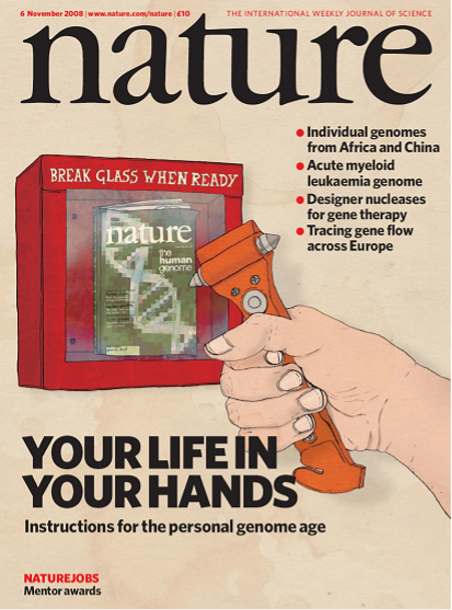(Continued from PART 1)
The International Human Genome HapMap Project
Launched in 2002, the HapMap project brought together researchers from multiple countries, including the United States, the United Kingdom, Japan, China, and Canada. Its primary objective was to construct a comprehensive map of haplotypes, enabling the study of single nucleotide polymorphisms (SNPs) within diverse populations and the identification and cataloging of common genetic variations across the human genome.
Within this international collaboration, BGI, alongside other Chinese scientists, undertook a significant role, contributing to 10% of the overall task. Their responsibilities encompassed the mapping of haplotypes found on chromosomes 3, 21, and 8.
In 2005, the International HapMap Consortium introduced the Phase I HapMap, a valuable resource featuring one million accurate and complete SNP genotypes derived from 269 individuals representing four diverse populations. Building upon this success, the Phase II HapMap was released in 2007, augmenting the original map with an additional 2.1 million SNPs analyzed in the same group of 269 individuals.
To broaden the scope of their research, scientists expanded the Phase I/II HapMap by including genotyping and sequencing data from additional samples sourced from both the original HapMap populations and seven supplementary populations. This extended project, known as "HapMap 3," culminated in the unveiling of its conclusive outcomes in September 2010.
The findings of the HapMap Project revealed intriguing insights into the unique haplotype structures present in the three primary populations: African, Caucasian, and Asian. These outcomes sparked a revolution in genetic research, laying the groundwork for subsequent projects and facilitating a deeper comprehension of human genetics and its profound impact on health and disease.
Notably, the Chinese and Asian population exhibited distinct genetic backgrounds, disease susceptibilities, and responses to drugs, setting it apart from other population groups. For instance, Caucasians have a higher predisposition to skin cancer, while Chinese individuals are more susceptible to liver cancer. The need for more precise maps persisted, specifically in identifying disease-causing genes and their variations.
The Yanhuang Project
Acknowledging the importance of understanding genetic diversity within the Chinese and Asian populations, BGI, in collaboration with other institutions in China, embarked on the "Yanhuang Project" in 2006. This visionary initiative aimed to sequence the genomes of 100 Chinese individuals, constructing a high-resolution genetic polymorphism map to propel medical research focused on the Chinese and Asian populations.
On November 6, 2008, BGI published the first Asian human genome in the prestigious journal Nature. This breakthrough marked the completion of the Yanhuang Project's reference genome, solidifying its place as the third fully sequenced human genome, following the sequencing of James Watson's and J. Craig Venter's genomes in 2007.
BGI's commitment to advancing genomic research led to ongoing refinements of the Asian human genome through the adoption of enhanced research methods. Subsequent findings were disseminated in leading scientific journals. By May 2015, BGI had compiled and released the most comprehensive genomic map, encompassing all known human genome sequencing results up to that time. This monumental achievement opened new avenues for further exploration and deeper understanding of the intricacies of the human genome.
 BGI published the first Asian human genome in Nature, Volume 456 Issue 7218, 6 November 2008. (Credit: Nature; Cover graphic by Jay Taylor)
BGI published the first Asian human genome in Nature, Volume 456 Issue 7218, 6 November 2008. (Credit: Nature; Cover graphic by Jay Taylor)
1000 Genomes Project
On January 22, 2008, a momentous international collaboration commenced with scientists from China, the United Kingdom, and the United States jointly launching the "1000 Genomes Project" in Shenzhen, London, and Washington. Key initiators and contributors of this groundbreaking endeavor included BGI in China, the Wellcome Trust Sanger Institute in the UK, and NHGRI, a division of the National Institutes of Health (NIH) in the United States.
The goal was to create a comprehensive genetic variation map that covered nearly the entire human population, including variations with a frequency of at least 1% in the population, as well as those occurring at frequencies below 0.5% within genes.
In 2010 and 2012, the international collaboration published research findings in the journal Nature, presenting compelling evidence of significant disparities among different human populations, especially at the level of genomic sequence (genetic variation). In October 2015, the international consortium of the 1000 Genomes Project published two consecutive articles in Nature, constructing the world's largest catalog of human genome variations. This catalog helped researchers determine the causes of human diseases, and the publication marked the formal completion of the 1000 Genomes Project.
Right from the project's inception, BGI mobilized its various departments and made substantial investments to support the ambitious undertaking. As one of the pioneering institutions, BGI accounted for an impressive 24% of the total sequencing workload across nine sequencing centers. Throughout the project's duration, BGI conducted whole-genome sequencing of 634 individuals from eight distinct human populations, along with exome sequencing of 895 individuals from 11 human populations.
Overall, BGI contributed approximately 30% of the international 1000 Genomes Project. In terms of the final scientific output, BGI played a collaborative role as a co-author in three landmark research articles published in the . Notably, two articles were featured as cover stories, underscoring the significance of BGI's contributions to this transformative scientific endeavor.
The remarkable accomplishments of the latest pangenome project have left the world in awe, highlighting the indispensable role played by global collaboration and the unwavering commitment of organizations in advancing our comprehension of the human genome. This collective endeavor has ushered in a transformative era of personalized medicine, enabling tailored treatments that benefit individuals from diverse races, ethnicities, and ancestries.
Through the combined efforts of scientists and organizations worldwide, we now stand at the forefront of a genomic revolution poised to revolutionize healthcare and profoundly improve lives across the globe.
Source:
https://www.nytimes.com/2023/05/10/science/pangenome-human-dna-genetics.html
https://www.nytimes.com/2013/04/16/science/the-human-genome-project-then-and-now.html
https://mp.weixin.qq.com/s/9IcMww5WdLOPLZgudEgqFg
https://www.nature.com/articles/nature09534
https://www.ebiotrade.com/newsf/2003-3/L2003331133021.htm
http://zqb.cyol.com/content/2003-03/31/content_638149.htm



